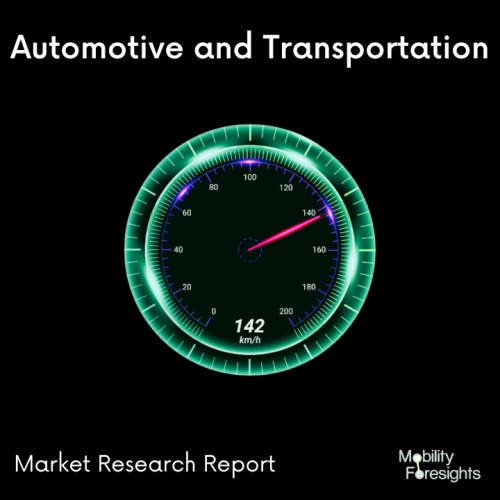
- Get in Touch with Us

Last Updated: Apr 25, 2025 | Study Period: 2023-2030
A well-known method for enabling bidirectional motor driving is H-bridge drivers. The motor may be driven to rotate by utilising one, and the polarity of the power supply to the motor can be switched to change the direction of rotation.
When necessary, it can also take care of braking. CAN bus messages or device inputs can be used to control H-Bridges. For bidirectional DC motor control, the CAN H-Bridge device can be used to separately supply protected low side (GND) or high side (VBat) supplies to each of the 4 outputs. On a per-bridge basis, low side outputs can be PWM modulated.
High efficiency, the ability to change the direction of the motor's rotation, and motor braking are the key benefits of employing an H-Bridge driver. An electrical circuit known as an H-bridge changes the polarity of a voltage applied to a load.
These circuits enable DC motors to move forward or backward in robotics and other applications.Its name comes from the fact that switching transistors are made in a 'H' arrangement.
It can be found in latching relay drive circuits and is mostly utilised for forward and reverse control in DC motors. Bridge driver and reversible motor driver are some alternative names.

The Global automotive H-bridge driver market accounted for $XX Billion in 2022 and is anticipated to reach $XX Billion by 2030, registering a CAGR of XX% from 2023 to 2030.
For usage in automotive applications, such as electronic throttles, Toshiba Electronic Devices & Storage Corporation Toshiba has introduced two brushed DC motor driver ICs, "TB9054FTG" in a wettable flank QFN package and "TB9053FTG" in a power QFN package.
The demand for system miniaturisation and cost reduction is being fueled by the increase in H-bridge motor drivers used in vehicle electronic throttles and other valves.
The second generation of on-board self-diagnostic equipment requirements, On-Board Diagnostic II (OBDII), will also become obligatory , requiring automotive motor driver ICs to include SPI communication functions.
This new ICs have 5A2ch output drivers, which contribute to lessening the mounting area. It is also feasible to use a 10A 1ch drive in parallel mode. They have features that only allow SPI communication to operate motors and can be daisy-chained, both of which limit the number of MCU ports.
| Sl no | Topic |
| 1 | Market Segmentation |
| 2 | Scope of the report |
| 3 | Abbreviations |
| 4 | Research Methodology |
| 5 | Executive Summary |
| 6 | Introduction |
| 7 | Insights from Industry stakeholders |
| 8 | Cost breakdown of Product by sub-components and average profit margin |
| 9 | Disruptive innovation in the Industry |
| 10 | Technology trends in the Industry |
| 11 | Consumer trends in the industry |
| 12 | Recent Production Milestones |
| 13 | Component Manufacturing in US, EU and China |
| 14 | COVID-19 impact on overall market |
| 15 | COVID-19 impact on Production of components |
| 16 | COVID-19 impact on Point of sale |
| 17 | Market Segmentation, Dynamics and Forecast by Geography, 2022-2030 |
| 18 | Market Segmentation, Dynamics and Forecast by Product Type, 2022-2030 |
| 19 | Market Segmentation, Dynamics and Forecast by Application, 2022-2030 |
| 20 | Market Segmentation, Dynamics and Forecast by End use, 2022-2030 |
| 21 | Product installation rate by OEM, 2022 |
| 22 | Incline/Decline in Average B-2-B selling price in past 5 years |
| 23 | Competition from substitute products |
| 24 | Gross margin and average profitability of suppliers |
| 25 | New product development in past 12 months |
| 26 | M&A in past 12 months |
| 27 | Growth strategy of leading players |
| 28 | Market share of vendors, 2022 |
| 29 | Company Profiles |
| 30 | Unmet needs and opportunity for new suppliers |
| 31 | Conclusion |
| 32 | Appendix |